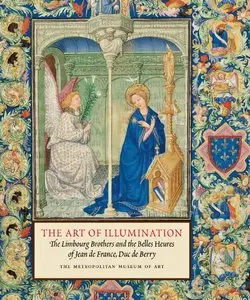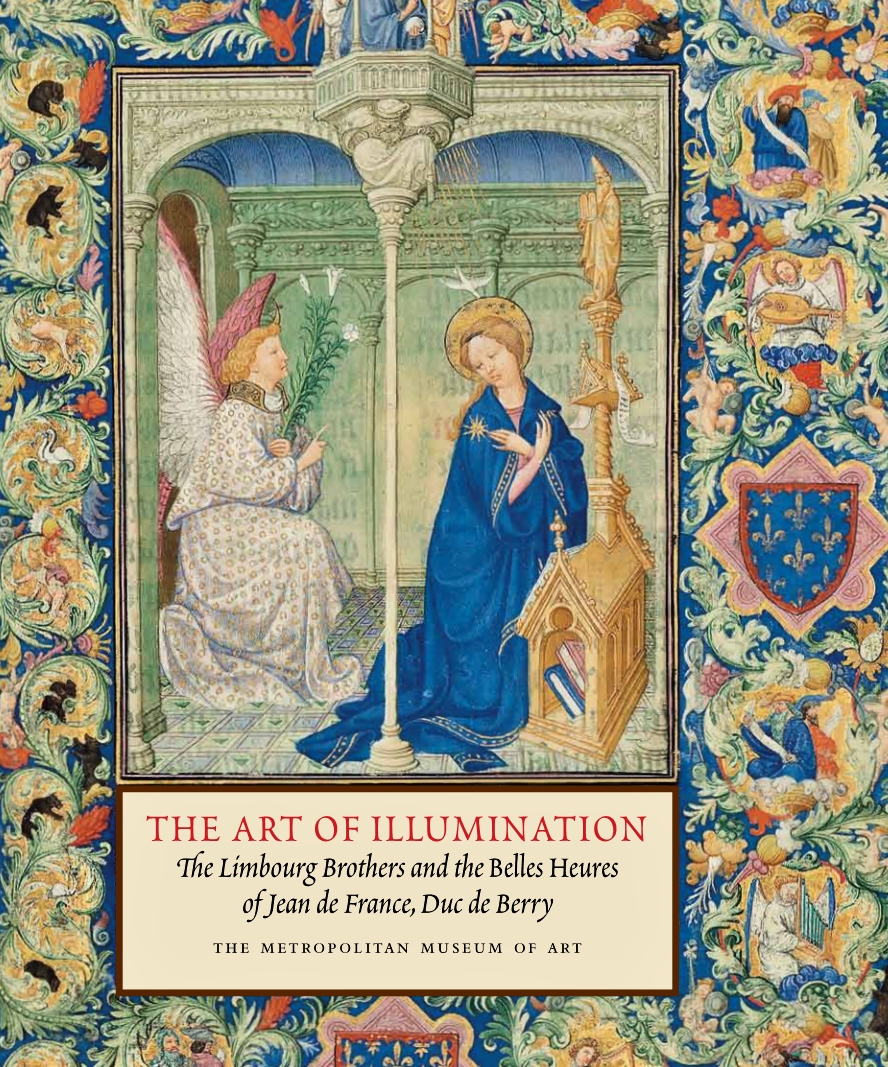Husband, Timothy B., "The art of illumination: the Limbourg brothers and the "Belles Heures" of Jean de France, Duc de Berry"
Publisher: Metropolitan Museum of Art | 2008 | ISBN: 0300136714 | English | PDF | 376 pages | 267.28 Mb
Publisher: Metropolitan Museum of Art | 2008 | ISBN: 0300136714 | English | PDF | 376 pages | 267.28 Mb
One of the most lavishly illustrated codices of the Middle Ages, the Belle Heures of Jean de France, duc de Berry (ca. 1405–1408/9), is the only manuscript with miniatures executed entirely by the famed Limbourg brothers. Commissioned by its royal patron, this richly illuminated Book of Hours, intended for private devotion and now housed in The Cloisters, The Metropolitan Museum of Art, belonged to the duke's large collection of prized possessions. The luminous scenes depicting the legends of the saints, the Hours of the Virgin, and the like, many with elaborately designed borders, exemplify the transcendent splendor of the Limbourg brothers' talents.
Jean de France, duc de Berry—the son, brother, and uncle of three successive kings of France—commissioned the Belles Heures as an addition to his luxurious possessions ranging from illuminated manuscripts and goldsmith work, to castles throughout the French countryside. A discriminating patron, Jean de France selected the Limbourg brothers to create this Book of Hours, allowing the young boys (who were in their early teens throughout the duration of the project) a rare latitude for inventively designing the work.
In this volume, the Limbourgs provided the customary components of a Book of Hours, including readings from the Gospels and prayers to the Virgin. The Belles Heures, however, was elevated to unprecedented heights by the addition of seven "picture book" insertions. These pages provided a framework for developing the Limbourg's figural style, refining their palette, experimenting with light and surface values, and devising coherent compositional formulas that focused the dramatic charge of the image. These illuminations, both sacred and secular in subject, range from traditional scenes of Christ's life and ministry to images reflecting the turbulence of the period, such as victims struck by the plague.
Timothy B. Husband's expert scholarship positions the manuscript, its artists, and its patron in context with other objects in the duke's collection and the sources and inspiration of the art. He meticulously charts the components of the codex, its organization and decoration, sequence of production, and the compositional intelligence of the narrative cycles. He places the Belles Heures within the trajectory of fifteenth-century manuscript illumination, delineating the development of the Limbourgs throughout their short careers. A lyrically written central chapter in this volume describes each illumination in the Belles Heures in formal terms and provides selected transcriptions and English translations of the Latin text.
A technical essay by Margaret Lawson offers invaluable insight into the structure of the manuscript and the methods by which it was created. Photomicrographs, taken during Lawson's examination of the pages under high magnification, give the reader unprecedented close-up views of the artists' precision.
All of the illuminations in the manuscript are reproduced in color, many of them the same size as the original.
Director's Foreword by Philippe de Montebello
Acknowledgments
Preface
Introduction: The Belles Heures of Jean de France
Jean de France, Duc de Berry
The Limbourg Brothers
Structure and Summary of the Manuscript
Collation
Page Organization and Decoration
Sequence of Production
Descriptions and Texts of the Miniatures
The Compositional Intelligence of the Narrative Cycles
Sources and Influences
The Artistic Achievements of the Limbourg Brothers
Appendix
Technical Observations: Materials, Techniques, and Conservation of the Belles Heures Manuscript
Margaret Lawson
Family Members of Jean de France, Duc de Berry
Tree Line
Schematic Chart of Calendar Pages
Bibliography
Index
Photography and Reproduction Credits
Acknowledgments
Preface
Introduction: The Belles Heures of Jean de France
Jean de France, Duc de Berry
The Limbourg Brothers
Structure and Summary of the Manuscript
Collation
Page Organization and Decoration
Sequence of Production
Descriptions and Texts of the Miniatures
The Compositional Intelligence of the Narrative Cycles
Sources and Influences
The Artistic Achievements of the Limbourg Brothers
Appendix
Technical Observations: Materials, Techniques, and Conservation of the Belles Heures Manuscript
Margaret Lawson
Family Members of Jean de France, Duc de Berry
Tree Line
Schematic Chart of Calendar Pages
Bibliography
Index
Photography and Reproduction Credits
Timothy B. Husband is Curator, Department of Medieval Art and The Cloisters, The Metropolitan Museum of Art, New York.
Margaret Lawson is Associate Conservator, Department of Paper Conservation, The Metropolitan Museum of Art, New York.
Margaret Lawson is Associate Conservator, Department of Paper Conservation, The Metropolitan Museum of Art, New York.
Speculum, A Journal of Medieval Studies
"… a lavish publication … resulted in a rich, well-documented study of the manuscript's history, patronage, production, and iconography … Husband makes many astute observations about the physical appearance of the manuscript that are a testament to his years of close study. … Perhaps its publication will inspire scholars to mine the Belles Heures as an incredibly rich source of material for future projects that consider issues of gender, class, sexuality, reception, and other topics of a more theoretical nature. … an authoritative … monographic manuscript study, providing an in-depth look at one of the most luxurious manuscripts in existence."
History Today
"… a treasure … illustrated in glowing colours that make 'lavish' sound inadequate. A work of scholarship and visual delight."
Arthuriana
"[Husband] is uniquely suited to offer insights into the Limbourgs' extraordinary creation … Husband's artful study is an illuminating contribution to the field."
Margaret Goehring
"[A] beautifully produced book."
"… a lavish publication … resulted in a rich, well-documented study of the manuscript's history, patronage, production, and iconography … Husband makes many astute observations about the physical appearance of the manuscript that are a testament to his years of close study. … Perhaps its publication will inspire scholars to mine the Belles Heures as an incredibly rich source of material for future projects that consider issues of gender, class, sexuality, reception, and other topics of a more theoretical nature. … an authoritative … monographic manuscript study, providing an in-depth look at one of the most luxurious manuscripts in existence."
History Today
"… a treasure … illustrated in glowing colours that make 'lavish' sound inadequate. A work of scholarship and visual delight."
Arthuriana
"[Husband] is uniquely suited to offer insights into the Limbourgs' extraordinary creation … Husband's artful study is an illuminating contribution to the field."
Margaret Goehring
"[A] beautifully produced book."





